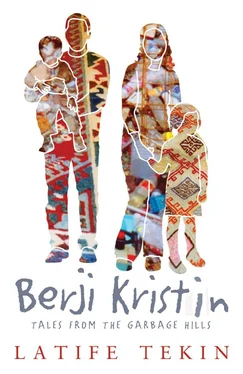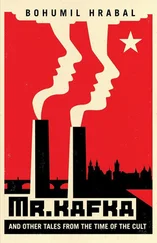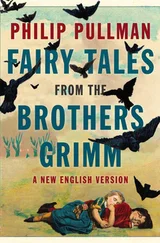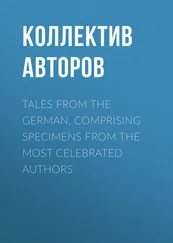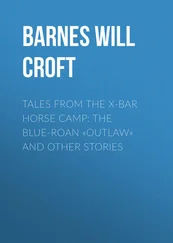Honking Alhas’ information about the gypsies roused such repercussions on Flower Hill that for days on end the main subject of inquiry was how the Gacos managed to find three hens a day to eat. All the other communities on the garbage hills heard about the pills that wafted people from dream to dream, and the stories of the three hens and the ‘clove’ of hashish — as Alhas used to call it. New information from the squatters who lived next to the gypsies mingled with Honking Alhas’ accounts. And in this way the Flower Hill folk learned about the gypsy weddings, their ways of quarrelling and swearing, their fondness for music and their versatility in a thousand and one ways. But Honking Alhas thought the Flower Hill folk still did not know enough about the gypsies and he re-opened the dusty pages of history. He told them how the Romanies had been chased from the city by the sultan, had rebelled against the Ottoman Empire and after a lengthy struggle had set up camp and brought a great city of tents into being. Honking Alhas rolled the name of this city round his tongue for days and when he repeated again and again that there was nowhere else in the world like it, they thought on Flower Hill that his knowledge was exhausted. But Alhas proved he knew more about the gypsies than anyone else on the garbage hills when he spoke of their inroads on this country in 1936, long after they had founded their city. After his account of this and certain other events, the Flower Hill people understood that no one could compete with Alhas on the history of the world and humanity. Long before anyone had heard of the words ‘hut’ and ‘garbage’, a situation had developed in one of the great countries of the world. It was known as the ‘Revolution’, but seemed to mean a human whirlwind. Herds of Romanies were living in this country, wandering about playing their music. After the human whirlwind had come to rest, the name of this country was recorded in history as ‘Communist’ and in the new order which came about an old and splendid name was darkened. As the gypsies were barbarians who did not conform to order, the name ‘Romany’ was erased from their identity papers and replaced by ‘Turk’. Thus in 1936 these non-conformers were trapped in their hordes among the Turks.
Alhas’ astounding depth of knowledge made the hut people forget about the arrival of the gypsies on Flower Hill. His narrative was so embellished with references to unknown places and lists of dates that the squatters became curious about how all this knowledge had filtered into his head; they were no longer interested in the cardboard houses the gypsies would build or the pills that would float them to dreamland. Honking Alhas became the most talked-about squatter on the garbage hills. His hut was singled out from the others and people kept going up his street to knock on his door.
Throwing back his head haughtily and narrowing his eyes Alhas answered the questions put to him. He listed his reasons for accumulating all this knowledge, saying that the subject he had been most curious about all his life was the origin of human beings. The squatters gaped with amazement as he explained how he had discovered the chief ancestors and greatest saints of all the races of men. He told them the story of some of the races. He announced that the Laz were the grandchildren of the fishing tribes who had come as settlers from the north seas and that their ancestor was Chief Istafanos, leader of the first tribe to arrive. He smiled as he reminded them that most of the Laz did not even know the name of their ancestor. After Chief Istafanos he named a holy man of the Chinese, ‘Konfektyon’, and had much to say about him. He told them that the people of China lived their lives according to his teachings which they kept in a huge book that was one of the most valuable in the world. Then he gave them some of Konfektyon’s counsels.
Konfektyon’s name and counsels brought fame to Honking Alhas almost as great as Mr. Izak’s and Kurd Cemal’s. He felt he had to have a suit of shiny sky-blue material tailor-made for himself to merit the interest shown by the squatters. First he welcomed the squatters who came to his hut to receive Konfektyon’s words of wisdom and learn the names of their ancestors, then he withdrew to his back room. Donning his shiny sky-blue suit he came out to meet them. His hair was combed back except for a single wet curl, shaped like a rose leaf, which fell on his forehead. He raised his head high and took his place on the divan to deliver his lessons in history and humanity.
As the Flower Hill folk sat gazing at Honking Alhas on his divan, innumerable cardboard houses were set up on the garbage mounds. The gulls had their legs bandaged and came back to life, and while they perched on the backs of the bears and flew back and forth, the cardboard houses were having their interiors decorated with an assortment of objects retrieved from the garbage. Lines were stretched from one corner to another, and plastic dolls scavenged from the garbage, their hair and arms torn off, hung from them like bunches of grapes. Old fashion magazines thrown on the refuse heaps were stuck up on the cardboard walls, pinned open at their cover pages. The rest of the spaces were adorned with coloured glossy paper picked from the rubbish and cleaned up. Round or flattish bottles and tin cans with picture labels hung from the ceilings. Volumes of books in languages which even the Romanies did not understand were rescued from the garbage and spread on the floors. The divans made of garbage books were covered with gull feathers. The centre pages of the fashion magazines dangling on the walls like lanterns, turned this way and that to the sound of baǧlama and tambourines. The shiny coloured paper gleamed, and feathers flew about in the cardboard houses. The voices of Romany children and the sounds of Romany instruments streamed into the huts of Flower Hill and some of the squatters went to see, wondering what it was like in the decorated homes of the Romanies. They described what they saw and others in turn reported what they heard. The cardboard décor of the garbage mounds and the gypsy songs which ran, ‘the moon turns with a rustle, the huts gleam’, spread to the huts of Flower Hill.
Under paper sheets
Romanies shiver.
The moon rustled and turned. The factories gleamed, and the men worked faster than flying. The moon sank, the sun came up, and over the garbage hills the shouts of the metal workers rose to the heavens. In the huts vibrating with these cries they heard that the metal workers from the refrigerator factory were being joined by other workers on their march to Minibus Way. It was reported that the marchers were homeless men without families who would try to attack the people and take away their homes. Further rumours followed that the marchers on their way had smashed the factory windows and beaten up laggard workers, forcing them to join the march. Then the hut community rose up to follow the workers. Rubbish Road, only just cleared of the marching, shouting workers who waved banners overhead, now filled up with squatters pouring from the huts and cardboard houses. Flower Hill was empty except for a few people fearfully nailing boards over their doors and windows and securing them with locks. While they kept guard on their huts, the sound of distant gunfire halted the squatters as they followed behind the workers. News rippled through the crowd that the workers were clashing with the police, at which point the crowd began to flow back, colliding with the huts, and broke up in Flower Hill’s narrow alleys.
On Minibus Way the workers’ banners were torn to shreds and their cudgels broken. The sun seemed to rustle and turn. On Asphalt Road a worker was shot and died shouting along with the others, ‘If you grab the worker’s share, it’ll stick in your throat.’ The sun withdrew and sank behind the rubbish mounds.
Читать дальше
